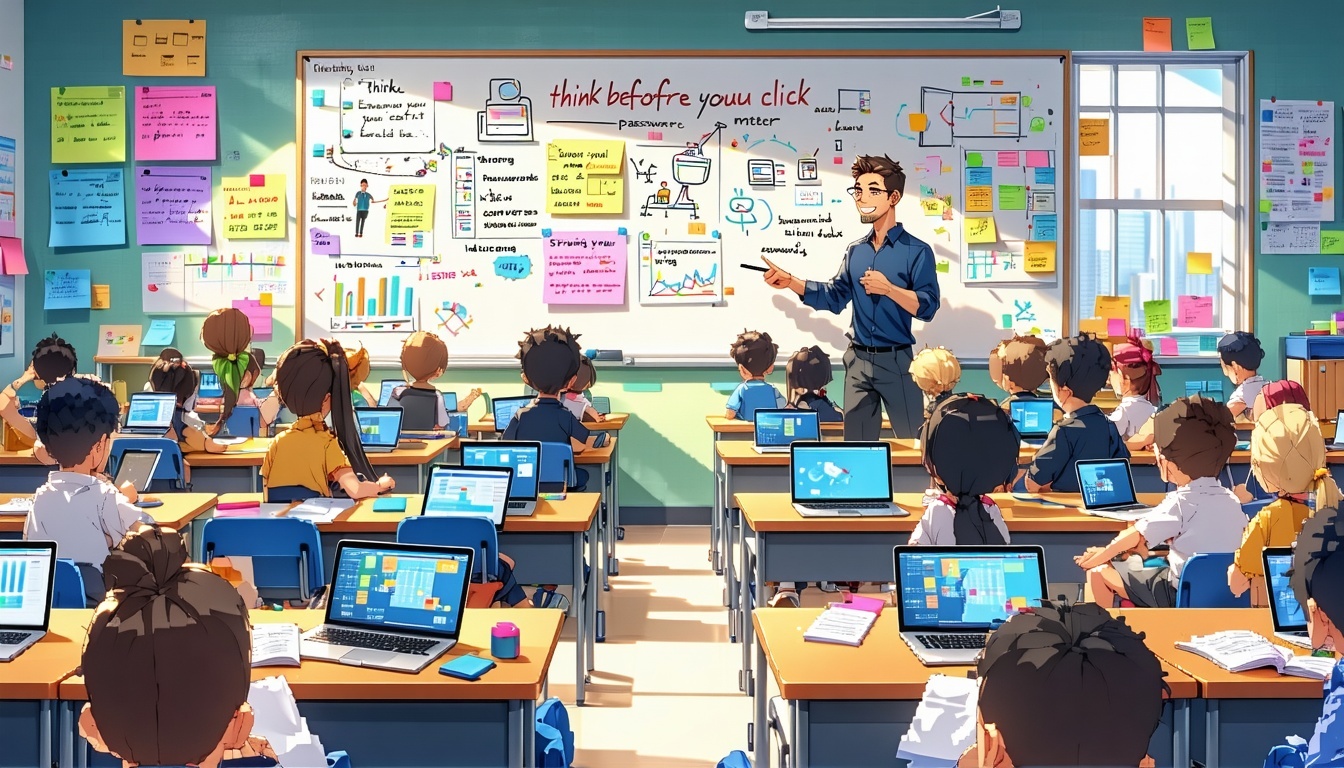The Role of AI in Detecting Cyber Threats in Schools
The article explores the growing role of AI in protecting schools from evolving cyber threats as educational environments become increasingly...
You must be logged in to the LATechNet portal to view additional resources.
3 min read
 Aria - LATechNet Team
:
May 23, 2025 6:02:42 AM
Aria - LATechNet Team
:
May 23, 2025 6:02:42 AM

In today's digital world, cybersecurity breaches have become increasingly common, even affecting places you'd least expect—like our K-12 schools. Educational institutions often store sensitive information about students, staff, and even families, making them attractive targets for cyber-attacks. You might wonder, why schools? Well, schools typically have limited resources and less robust cybersecurity measures compared to big corporations or government agencies, making them easier targets for hackers.
Understanding the importance of being prepared for a potential cybersecurity breach is crucial. Acting quickly and effectively can minimize the damage and disruption caused by these incidents. When educators and school administrators know exactly what steps to take during a breach, they can protect their school community and maintain trust. Remember, preparedness isn't just about technology—it's about ensuring safety and peace of mind for everyone involved.
Did you know that between July 2023 and December 2024 alone, a startling 82% of K-12 schools had some kind of cybersecurity incident? (cybersecuritydive.com). And going back even further, since 2005, schools have faced over 1,300 breaches affecting more than 24.5 million sensitive records (cisomag.com). Schools handle a lot of important information: student records, staff data, financial details, and more. These are exactly the kinds of information hackers want. When a breach happens, it doesn't just hurt the school's reputation—it can also lead to costly legal issues, financial losses, and emotional stress for students, parents, and staff members. Understanding these impacts helps us appreciate just how important good cybersecurity practices are for protecting our school communities.
When a cybersecurity breach happens at your K-12 school, the first step is always to identify and contain it quickly. Look out for unusual activities like sudden account lockouts, mysterious emails, unexpected software installations, or slow network performance. If you suspect something is off, immediately disconnect affected systems from the network to limit the damage. This simple step can help stop the breach from spreading further.
Next, clearly communicate what's happened. Internally, ensure your staff and administrators are promptly informed so they can support containment measures and reduce panic. Externally, notify law enforcement, parents, and any regulatory bodies as required. Clear, honest communication helps maintain trust and manage the situation effectively.
Lastly, put your Incident Response Plan into action. Having a well-designed, pre-established plan is crucial—it outlines everyone's roles and responsibilities, making sure your team knows exactly how to respond swiftly and efficiently (opsrc.net). This preparation can truly make a stressful situation much easier to handle.
After the immediate crisis is over, it's time to take a breath and start thinking about the future. First, dive into a detailed investigation. Conduct thorough forensic analysis to understand exactly what happened, how it occurred, and identify the weak spots. Make sure you document everything clearly; good notes not only help comply with regulations but also serve as an essential reference if something similar happens again.
Next, you'll focus on remediation and system restoration. Think of this as carefully rebuilding a house after a storm, making sure everything is sturdier than before. Apply secure restoration strategies and prioritize patch management, keeping your software and security systems updated to patch any vulnerabilities.
Finally, gather your team for a post-incident review. Reflect on lessons learned, revise policies as needed, and use the experience to strengthen your cybersecurity practices, reducing the chances of future breaches.
One of the smartest moves a school can make is weaving cybersecurity directly into their emergency plans. Just like preparing for fire drills or bad weather, cybersecurity needs its own spot in the school's safety plan. The U.S. Department of Education highlights how integrating cybersecurity into emergency operations helps schools respond quickly and effectively if an incident occurs (ed.gov).
Following CISA's K-12 Cybersecurity Game Plan is another excellent way to stay ahead. It provides step-by-step actions schools can take to safeguard their networks, making it easier to follow through consistently (axios.com). Regular training sessions that educate faculty, staff, and even students about online safety keep everyone sharp and alert. Finally, routine testing and updating of cybersecurity response plans ensure your school stays prepared as technology and threats evolve.
When a cybersecurity breach hits a K-12 school, having experienced support makes a huge difference. That’s where LATechNet comes in. With deep expertise in cybersecurity specifically tailored for educational institutions, LATechNet truly understands the unique challenges schools face.
LATechNet offers comprehensive cybersecurity assessments and vulnerability management, helping schools spot weak spots before attackers do. They also help develop, implement, and test customized Incident Response Plans, ensuring you're prepared when trouble strikes. Plus, their engaging staff training sessions build awareness, turning your entire school community into cybersecurity allies.
Beyond training and planning, LATechNet provides ongoing monitoring, threat detection, and rapid response support, keeping your school safe around the clock. Partnering with LATechNet means improved security, quicker response times during incidents, and ongoing compliance with regulatory standards—giving administrators, teachers, students, and parents peace of mind.
In today's digital classroom, proactively preparing for cybersecurity breaches isn't just smart—it's essential. By having a clear plan and responding quickly, schools can protect sensitive student information and minimize disruptions to learning. It's important for schools to put cybersecurity at the top of their priority list, ensuring all staff know exactly what to do when a breach occurs. Partnering with experienced IT providers, such as LATechNet, can make a significant difference, providing the expertise and tools necessary to keep your school safe and secure. Remember, cybersecurity is an ongoing journey, and staying prepared means your school can confidently handle any digital challenge that comes your way.

The article explores the growing role of AI in protecting schools from evolving cyber threats as educational environments become increasingly...

Ransomware attacks are increasingly targeting K-12 schools, disrupting learning and compromising sensitive data. These attacks often begin through...

In today's digital landscape, cybersecurity is crucial for schools to protect sensitive student and staff information from increasing cyber threats...